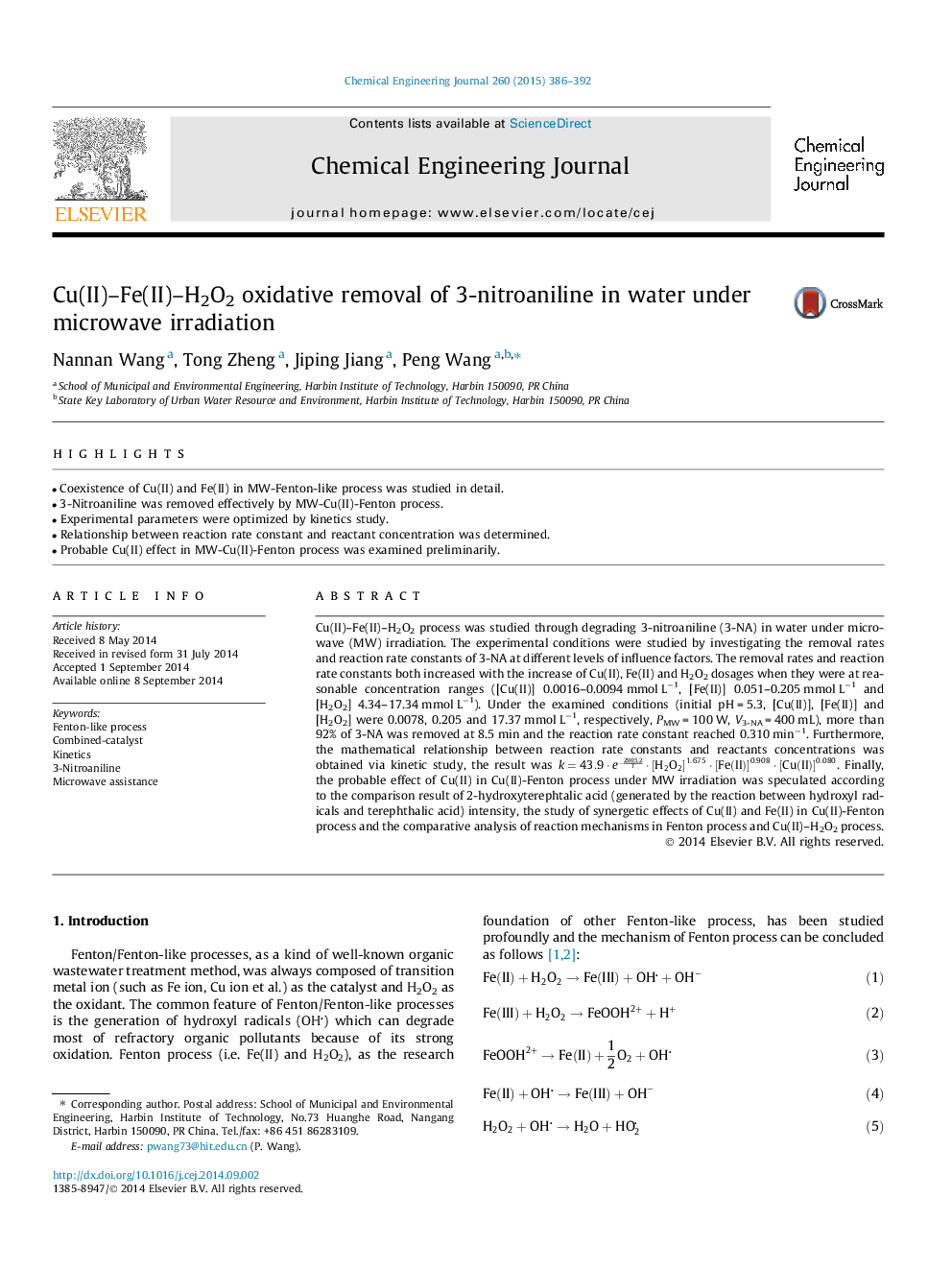| Article ID | Journal | Published Year | Pages | File Type |
|---|---|---|---|---|
| 146753 | Chemical Engineering Journal | 2015 | 7 Pages |
•Coexistence of Cu(II) and Fe(II) in MW-Fenton-like process was studied in detail.•3-Nitroaniline was removed effectively by MW-Cu(II)-Fenton process.•Experimental parameters were optimized by kinetics study.•Relationship between reaction rate constant and reactant concentration was determined.•Probable Cu(II) effect in MW-Cu(II)-Fenton process was examined preliminarily.
Cu(II)–Fe(II)–H2O2 process was studied through degrading 3-nitroaniline (3-NA) in water under microwave (MW) irradiation. The experimental conditions were studied by investigating the removal rates and reaction rate constants of 3-NA at different levels of influence factors. The removal rates and reaction rate constants both increased with the increase of Cu(II), Fe(II) and H2O2 dosages when they were at reasonable concentration ranges ([Cu(II)] 0.0016–0.0094 mmol L−1, [Fe(II)] 0.051–0.205 mmol L−1 and [H2O2] 4.34–17.34 mmol L−1). Under the examined conditions (initial pH = 5.3, [Cu(II)], [Fe(II)] and [H2O2] were 0.0078, 0.205 and 17.37 mmol L−1, respectively, PMW = 100 W, V3-NA = 400 mL), more than 92% of 3-NA was removed at 8.5 min and the reaction rate constant reached 0.310 min−1. Furthermore, the mathematical relationship between reaction rate constants and reactants concentrations was obtained via kinetic study, the result was k=43.9·e-2905.2T·[H2O2]1.675·[Fe(II)]0.908·[Cu(II)]0.080. Finally, the probable effect of Cu(II) in Cu(II)-Fenton process under MW irradiation was speculated according to the comparison result of 2-hydroxyterephtalic acid (generated by the reaction between hydroxyl radicals and terephthalic acid) intensity, the study of synergetic effects of Cu(II) and Fe(II) in Cu(II)-Fenton process and the comparative analysis of reaction mechanisms in Fenton process and Cu(II)–H2O2 process.
